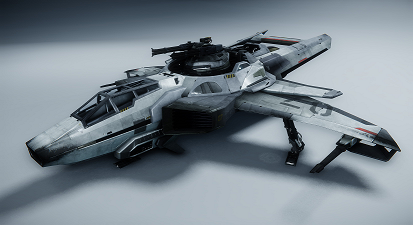Momentum
Momentum is defined as p = mv,
where m is the mass of the object, and v is its
velocity. Obviously, this leads to The Question! If you
ram something head on, how many Newtons can it take
before breaking apart?
Well, using our two beloved ships,
let's find out!
 |
VERSUS |
 |
| 325a
Image Location |
Hornet
Image Location |
|
| Mass: 21.5t. (19505 kg) | Mass: 22t. (19960 kg) | |
| Maximum Velocity: 220 m/s | Maximum Velocity: 200 m/s | |
| Touring ship
designed for comfort. Probably not able to take a
lot. |
Military
front line fighter. Probably able to take a lot. |
We have our ships! Next is data
collection! After a while of ramming nose-first into a
large, unyeilding object, I found some interesting
things out.
| Velocity(m/s) |
325a |
Hornet |
| 110 | Explodes |
Explodes |
| 80 | Explodes | Explodes |
| 50 |
Explodes | Explodes |
| 30 |
Explodes | Explodes |
| 20 |
Explodes | Explodes |
| 12 | Explodes | Explodes |
| 10 |
Survives! |
Explodes |
| 9 |
Survives! | Explodes |
| 7 |
Survives! | Survives! |
This is interesting, because one
would assume that the Hornet, being designed to
withstand combat, could survive a slightly faster
collision than that of a ship made for comfort.
Well, let's look at their momenta!
Both the fastest they can survive, then the one just
above their threshold.
For the 325a, we get:
Exploding, 12m/s: p = 19505kg(12m/s) = 234060 N.
Surviving, 10m/s: p = 19505kg(10m/s) = 195050 N.
The difference between the two momenta is 39010 N.
For the Hornet, we get:
Exploding, 9m/s: p = 19960kg(9m/s) = 179640 N.
Surviving, 7m/s: p = 19960kg(7m/s) = 139720 N.
The difference between the two momenta is 39920 N.
For some obscure reason (I blame
space magic), the 325a can withstand a much greater
impact force than the Hornet can.
The object I was ramming into also
behaved interestingly. I was ramming into a sort of
laser drill platform, shown below.
 |
| Drill
Image Location |
The drill is massive, and unmoving
(which implies it's in geosynchronous orbit, but without
knowing anything about the planet below, we don't know
what that is. So for this, we'll call its relative
velocity 0m/s). When either of our ships crashed head
first into the drill, our ship just fell apart, and sat
in one spot. This implies an inelastic collision! So
let's figure out the drill's final velocity!
We have to assume the mass of the drill, however. The ISS weighs around 419,600kg, and these drills appear to be larger still. If we let the mass of our drills (M) be equal to about 5 times that of the ISS, we can relate M in terms of the mass of the 325a (m). This comes out to M is approximately 105 times larger than the mass of the 325a.
For inelastic collisions, we know
that mv(initial) = (m + M) v(final), or that the final
velocity is equal to mv(initial) / m + M.
Since we can relate M and m, we can factor that out as a
scalar, and get that v(final) = v(initial)/106.
This explains why the drill didn't really care when the
325a hit it. Since the 325a was traveling at 10 and 12
m/s, it was well under even a quarter of a meter per
second change in velocity. Even at as fast as the 325a
can travel, that still equates to only about a 2m/s
increase in velocity in the drill!
 |
 |
 |